Sights and Sounds: Cali's Gurgling Mud Volcanoes

Mud Volcano Album

The Davis-Schrimpf seep field is located about 40 miles (64 kilometers) southeast of Palm Springs, Calif., at an elevation of 230 feet (70 meters) below sea level. Here, carbon dioxide gases gurgle to the surface as a result of a magma zone found 1 mile (1.6 km) below the Earth's surface cooking the gas from carbonate minerals.
Mud Volcano Album
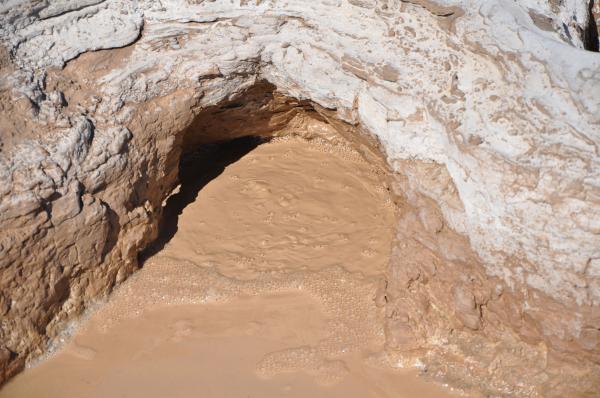
Over 50 mud volcanic features are found in this seep field, including gryphons, gas vents, salses, mudpots and springs all located within a 2-square-mile (5-square-km) area.
Mud Volcano Album
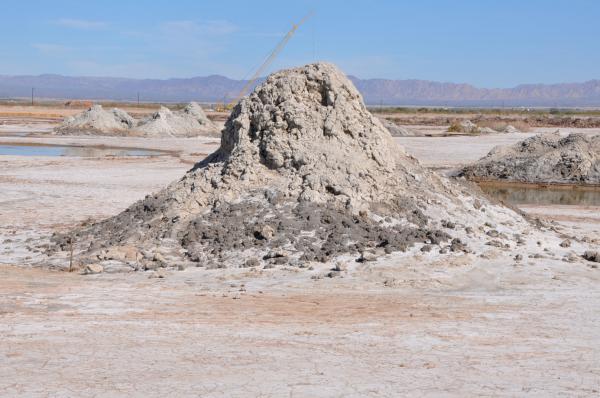
Gryphons are small earthen mounds built by the eruptions of the mud volcanoes. The fluids that create the gryphons are powered by hydrothermal carbon dioxide gas mixed with near-surface brines and are merely warm to the touch rather than hot.
Mud Volcano Album
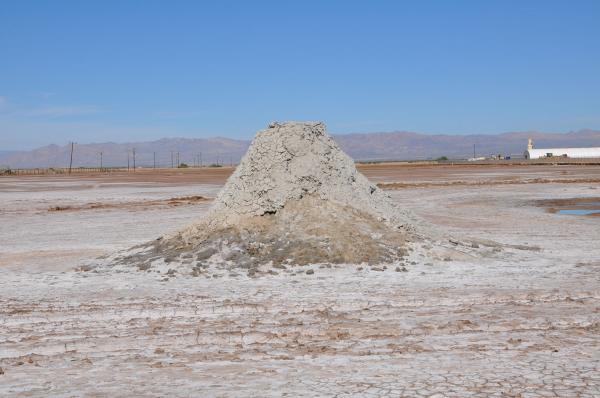
The viscosity of the mud extruding from a specific mud volcanic vent will help determine the height that each gryphon grows to. The amount of escaping carbon dioxide gas also influences the erupting power of the mixture and thus how high the small mountain of mud will grow.
Mud Volcano Album

A salse is a water-dominated pool with seeping and gurgling bubbles of carbon dioxide gas. This pool is about 20 feet (6 m) across. The water found in a salse is salty brine with small amounts of dissolved minerals, black petroleum and a variety of algae.
Mud Volcano Album
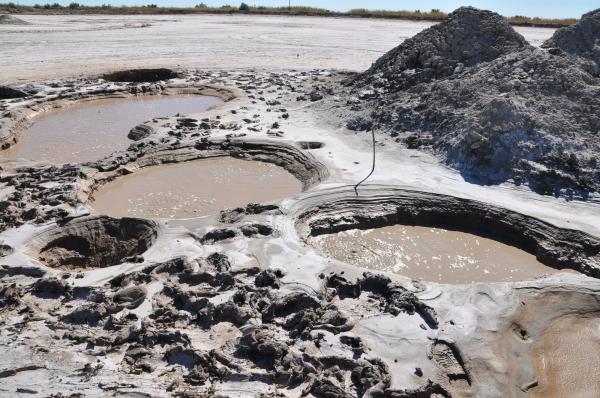
Some mud volcanoes actually form pits and are referred to as a "spring" in mud volcano terminology and as "mudpots" by lay visitors who come to visit this unique site. Most pits are between 18 to 24 inches (46 to 61 centimeters) in depth and 24 to 36 inches (61 to 91 cm) across.
Mud Volcano Album

The term "mud" is an actual geological term and refers to any sediment made from a mixture in the silt and clay size range of soil particles.
Get the world’s most fascinating discoveries delivered straight to your inbox.
Mud Volcano Album
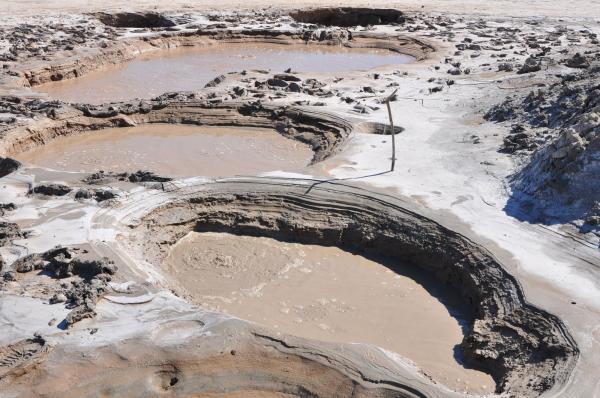
In some parts of the Davis-Schrimpf seep field the warm water from the mud volcanoes is so salty that the ground is covered with white salt crystals and crunches when walked upon like frozen snow.
Mud Volcano Album

Some of these southern California mudpots are gray in color while others are a rich shade of reddish brown. Here in the San Andreas Rift Valley , these amazing geothermal features gurgle, burp and croak as thousands of cars rush by them on nearby highways.
Mud Volcano Album
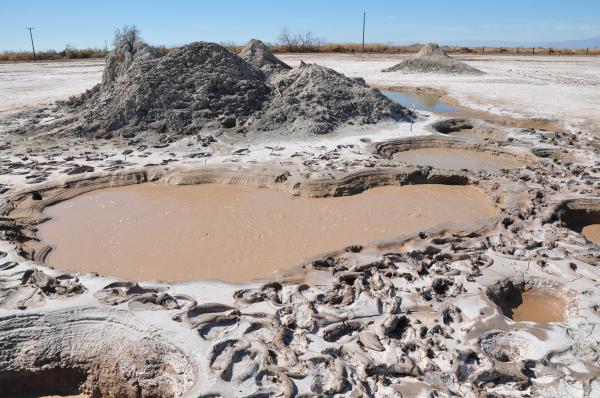
Gryphons, salses, springs and small mudpots are all found within a few feet of each other creating an out-of-this-world scene on the ancient Imperial Valley floor while producing a symphony of natural sounds similar to a desert gathering of gigantic mud bullfrogs.
Mud Volcano Album

A short distance away from the active field of mud volcanoes, another group of mudpots have mysteriously gone dry, awaiting the powerful forces from beneath the earth to once again bring back the bubbling, warm waters.


